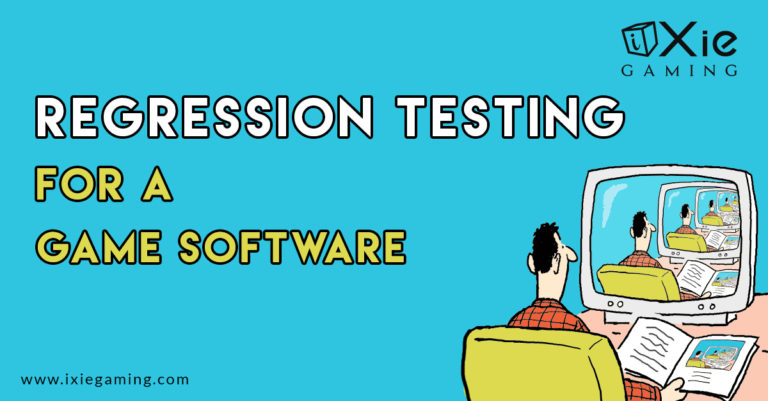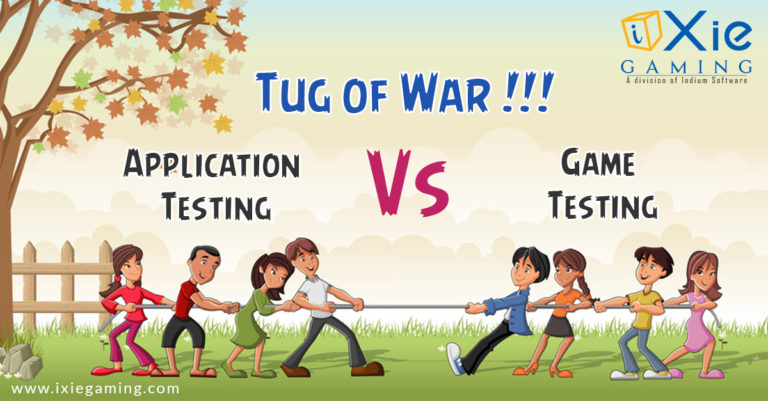The process of developing a game doesn’t end with coding and design. Testing the end product is crucial to ensure it delivers a seamless user experience (UX) and meets the industry requirements & standards. Several testing techniques are used to test the game’s readiness for release. Also, developers can use the testing to minimize bugs and errors in the game and improve its quality, driving toward an end product that delivers higher user satisfaction.
Functionality testing is one of those testing techniques often adopted in game testing. But what is it, and why is it essential for the success of your game? Join us as we dive deeper into this game-testing technique and its importance.
What is Functionality Testing?
Functionality testing is critical to your game’s success and cannot be ignored by any game tester. As the name suggests, functionality testing involves examining the functionality of the gaming software. Its main purpose is to detect potential glitches and bugs affecting the end-user’s satisfaction.
Gamers are directly affected by the functionality of a game because it offers an interactive and sometimes immersive experience. For instance, if a specific function fails frequently, a gamer unfairly loses the game to their opponent. Therefore, the player will be less likely to play that game for a long period. And that’s where functionality testing comes in.
This testing technique ensures that your game meets the designated specifications and is free of errors and glitches. As a result, it guarantees that gamers will enjoy a seamless gaming experience.

Techniques Used in Functional Testing
There are two major functional testing techniques, i.e., black box and white box testing.
Black Box Testing
Black box testing lets testers examine and explore the game features extensively. This approach is often time-consuming since testers must meticulously scrutinize everything, from audio-visual effects and graphical elements to gameplay mechanics. However, as time-consuming as it may be, it is crucial to ensure your game meets industry requirements while preventing UX pitfalls.
White Box Testing
White box testing offers the tester much better prospects to execute the game’s source code directly and in ways players can never do. While this is often challenging, it enables testers to read individual pieces of code and forecast every interaction they may have with other blocks of code and whether the game developer accounted for every possible order or combination of inputs.
Another factor that makes white box testing challenging is that it can be impossible to account for the complexity of players’ feedback loop. However, this functional testing technique is essential in specific circumstances, including the following:
- When testing code modules that will become a reusable library across several platforms or games.
- Testing methods and code functions that create crucial parts of a game engine product or middleware.
- Testing new code before integrating it with the rest of the game code.
Why is Functional Testing Crucial to the Success of Your Game?
Here are some reasons why functional testing is critical to game success:
1. Ensures Game Functionality
Any successful game functions according to the design specifications. And how do you ensure your game meets the design specifications? Well, functional testing is the answer. Functional testing verifies that your game’s core features and functions work as intended.
This includes confirming that players can execute primary functions, like moving characters, accessing menus, and interacting with objects. Without functional testing, essential gameplay components may be broken. This can frustrate players’ user experience, driving them away.
2. Identification of Bugs, Errors, and Glitches
Games are sophisticated software systems with multiple interdependencies. With this complexity comes the likelihood of bugs, errors, and glitches. Unfortunately, you can’t afford to release a bug-stricken game to players today due to the availability of many flawless games.
Instead, you must ensure your game runs without errors to keep players glued to it, promoting its success. And that’s where functional testing comes into play.
Functional testing services help to locate errors, glitches, and bugs that may negatively affect the player experience. These issues may range from game crashes to graphical errors. With functional testing, you can address every glitch in your game, polishing its gameplay experience.
3. Seamless User Experience
User experience is arguably one of the most critical aspects of your game. It has a direct impact on how players consume or accept the game. Therefore, it determines its success in the market.
Functional testing helps detect UX issues such as:
- Gameplay flow
- Control responsiveness
- User interface design
Once you’ve addressed these issues, your UX will be better. This will give your players more engaging and immersive experiences, driving your game’s success.

4. Improved Reputation
Studies have shown that user comments and professional reviews (especially negative ones) affect experience measured through ratings. Therefore, multiple negative reviews may determine the player’s likelihood to play the game. And that may affect your game’s reputation across the gaming community.
With most of the games having communities on social media and other channels, your reputation as a game developer matters. Functional testing can help you maintain a good reputation among gamers by constantly delivering games that meet and, if possible, exceed the end user’s expectations. Also, it can prevent game-breaking issues, improving its success.
5. Improved Regulatory Compliance
Some games may need to adhere to specific content rating requirements and industry regulations, like those set by the Entertainment Software Rating Board (ESRB) or similar agencies. Functional testing helps ensure your game complies with these requirements, minimizing the risk of legal penalties that may significantly affect its success.
Final Thoughts
The last thing you need is a game that doesn’t function as required or has several bugs, errors, or defects that affect performance. Functional testing can save you the troubles related to poor-performing games that impact the overall gaming experience by enabling you to identify bugs and issues in the game functionality. This balances gameplay and can drive the games’ success by ensuring it delivers a more engaging, immersive, and seamless gaming experience.






